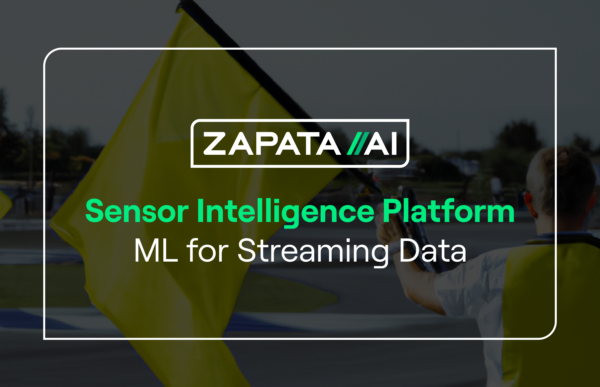Why 2023 is the Year to Adopt Quantum Computing
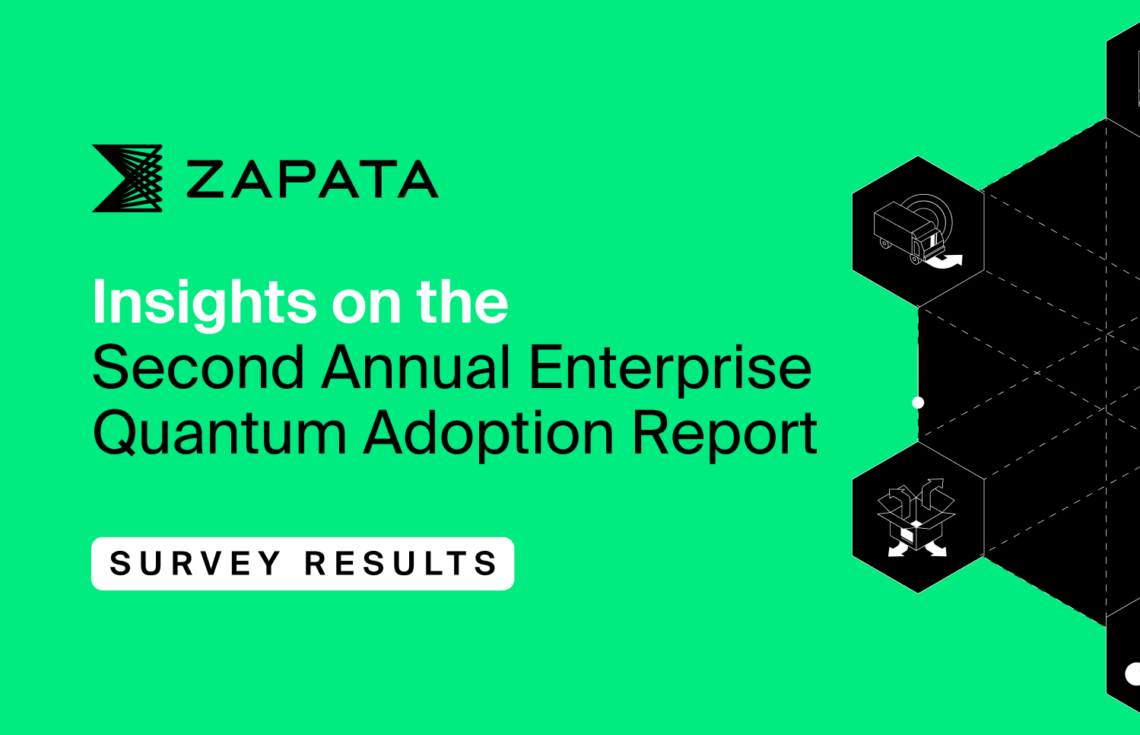
Why 2023 is the Year to Adopt Quantum Computing

If you or somebody in your organization is on the fence about adopting quantum computing in 2023, the results of our latest enterprise quantum adoption survey may be just the kick in the pants you need to overcome any hesitation and commit to building a real quantum capability.
Of the many quantum computing surveys released in recent months, our survey stands alone as the only research targeting a global audience of enterprise decision-makers — VP-level or above — with an analysis of year-over-year trends. It wasn’t going after just any enterprise either: it targeted industry leaders, those with annual revenue exceeding $250M. When these enterprises move, their industries follow. And unlike some other surveys, we didn’t profile our own customers — we commissioned an independent research firm, Wakefield Research, to survey 300 enterprise leaders with no relation to our business.
The unbiased responses we received point to widespread enthusiasm and progress among leading enterprises and suggest that we may have reached a tipping point in quantum adoption. Below are some of the key findings that show why there’s never been a better time to start your quantum adoption journey:
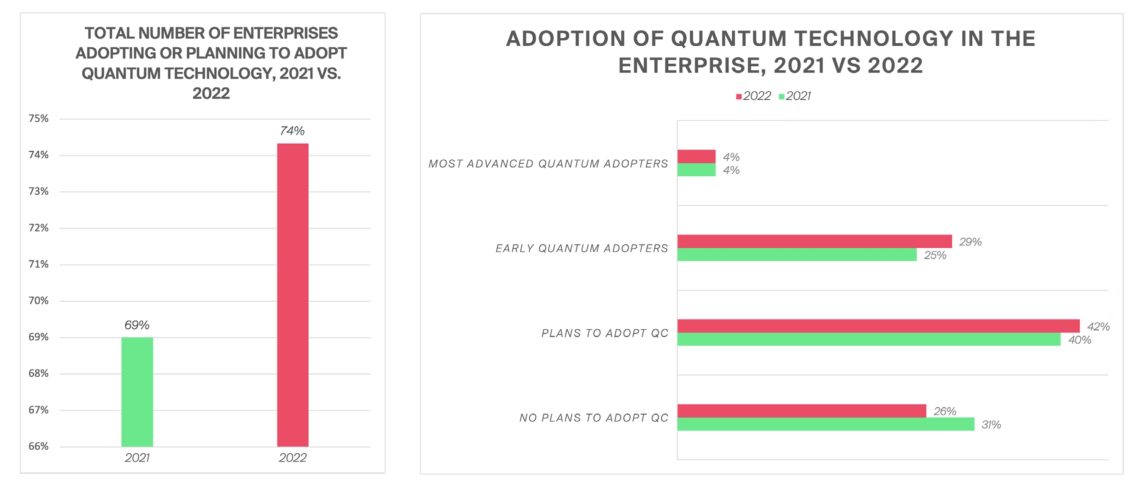
Nearly three quarters of enterprise leaders reported that they had started adopting or plans to adopt quantum computing in 2022, up from 69% in 2021. Of these enterprises, 33% reported being in the early or advanced stages of quantum adoption. Readers in the manufacturing sector take note: 62% of your peers are already in the early stages of adoption, drawn in by a wide range of high-value use cases.
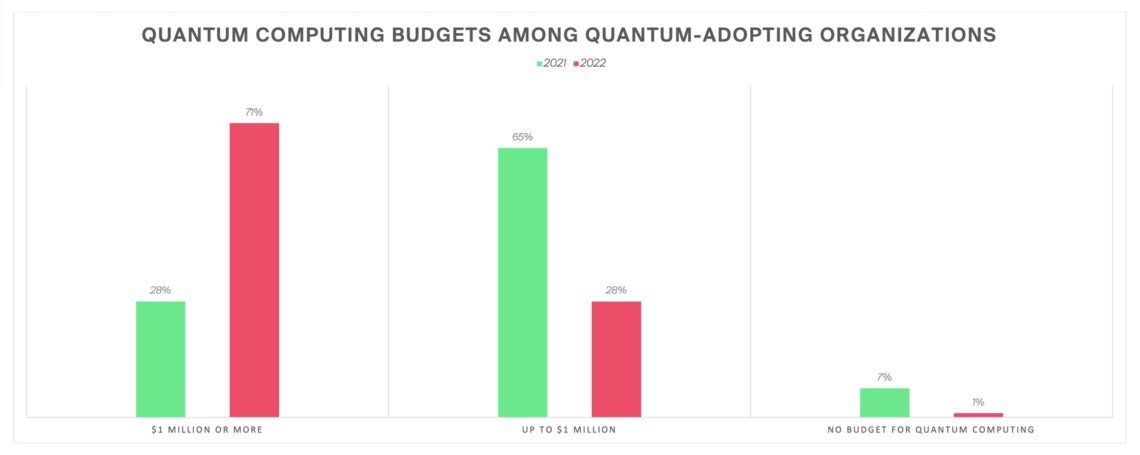
If “plans to adopt” sounds vague and subjective, note that this isn’t just talk — organizations are putting their money where their mouth is. 71% of quantum-adopting enterprises reported quantum computing budgets of more than $1 million, up from just 28% of respondents in 2021. Those in the advanced stage of adoption have budgeted even more, with 64% budgeting $2 million or more. All this despite a year of global economic uncertainty.
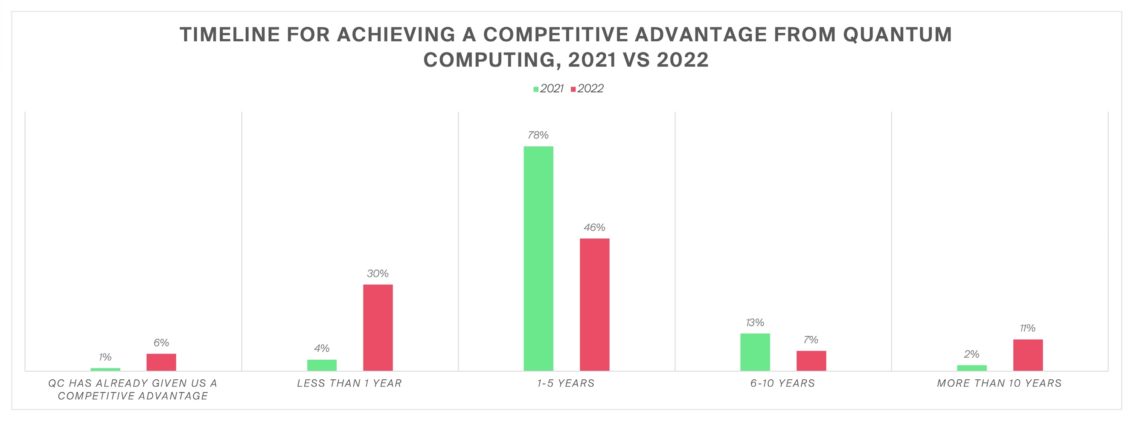
Respondents also expressed confidence that their investments will pay off — and pay off soon. 30% of quantum adopters expect to reap a competitive advantage from quantum this year, while 46% expect a competitive advantage within 1-5 years. 6% claim they already have a quantum competitive advantage.
A “quantum competitive advantage” is not necessarily the same as a “practical quantum advantage,” which is generally defined as the demonstrated and measured ability of a quantum computer to process a real-world problem faster than would be possible on a classic computer. A competitive advantage could be as simple as blocking IP (a motivation for 29% of adopters) or building a quantum team.
Given the critical shortage of quantum-capable talent, scooping up quantum talent or developing talent internally now can give enterprises a meaningful leg up over their competition. Already we see the talent shortage having an impact, with 81% of those building a quantum team resorting to upskilling existing personnel, up from 53% in 2021. Furthermore, 36% cited a lack of expertise/talent as a barrier to adoption, up from 34% in 2021.
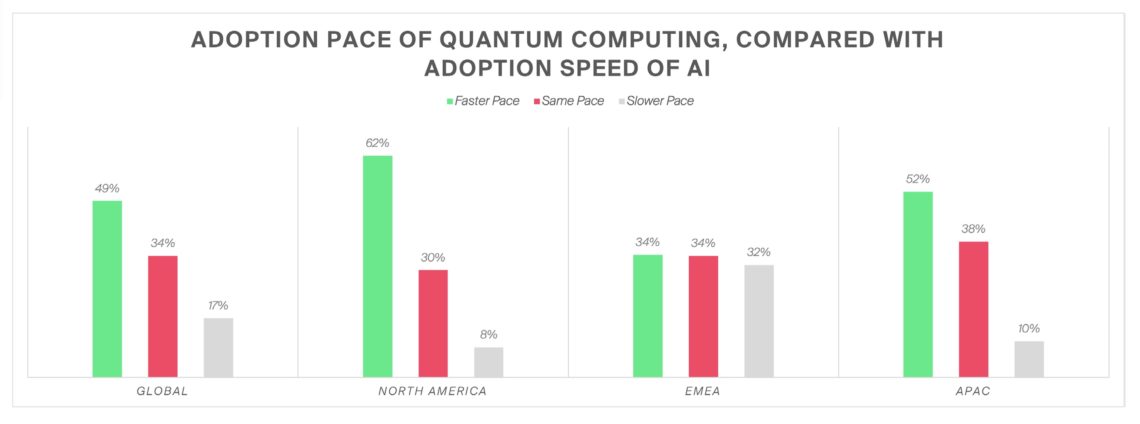
Another 34% reported quantum adoption was happening at the same speed as AI adoption. This trend was even more pronounced in North America, where 62% of enterprise leaders reported their quantum adoption was happening faster.
Given that machine learning and data analytics was the top use case for quantum adoption, it’s possible the accelerated pace stems from enterprises having more advanced AI foundations to build on than when they started adopting AI. It could also be that enterprises learned from the difficulties and protracted timelines of AI adoption and want to get a head start on quantum adoption.
In any case, the earliest AI use cases where quantum computing could provide a practical advantage will likely be in generative AI. For more information, check out our recent blog post to learn why generative AI is leading the race to practical quantum advantage.
The cybersecurity threat posed by PQC is a real and valid concern for enterprises. While Shor’s algorithm is the most well-known quantum threat, with the potential to compromise every instance of RSA encryption, it likely won’t pose a real threat for the next decade since it requires millions of error-corrected qubits. However, nearer-term threats could come in the form of quantum-classical heuristic algorithms similar to Variational Quantum Factoring (VQF), an algorithm developed by Zapata.
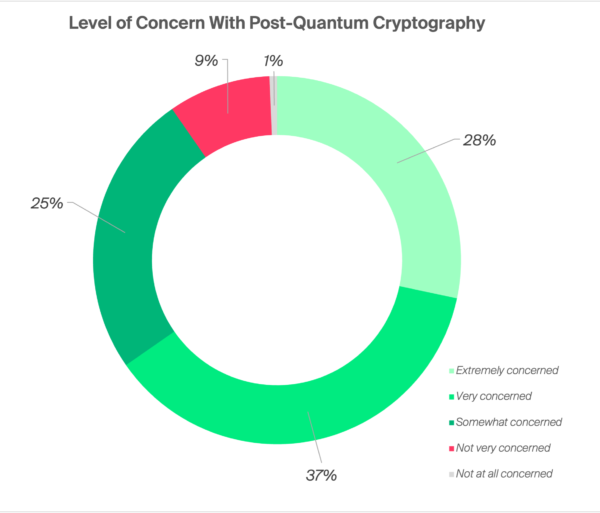
While they may not be able to crack every instance of RSA encryption like Shor’s, a heuristic algorithm could threaten some instances of RSA with only a few thousand qubits.
To prepare for the PQC era, more than half of the enterprise leaders we surveyed reported working with a quantum vendor (49%) or a professional services firm (14%). It would be wise to follow their lead: even if the threat doesn’t arrive for a few more years, it will take a few years to catalogue and migrate an entire enterprise worth of encrypted assets to quantum-secure protocols. And even these might be compromised in the future. Enterprises that start today on developing a cryptoagility capability, or the ability to rapidly switch between encryption schemes as the threat landscape evolves, will be in a much safer position when a quantum threat does emerge.
For more information on PQC, see our dedicated resource page.
The survey provided rich details on what enterprises are doing to prepare for quantum computing today that could be instructive for your enterprise. We’ve written at length before on what you can do to become quantum-ready, but below are the top quantum-readiness activities reported by our quantum-adopting respondents:
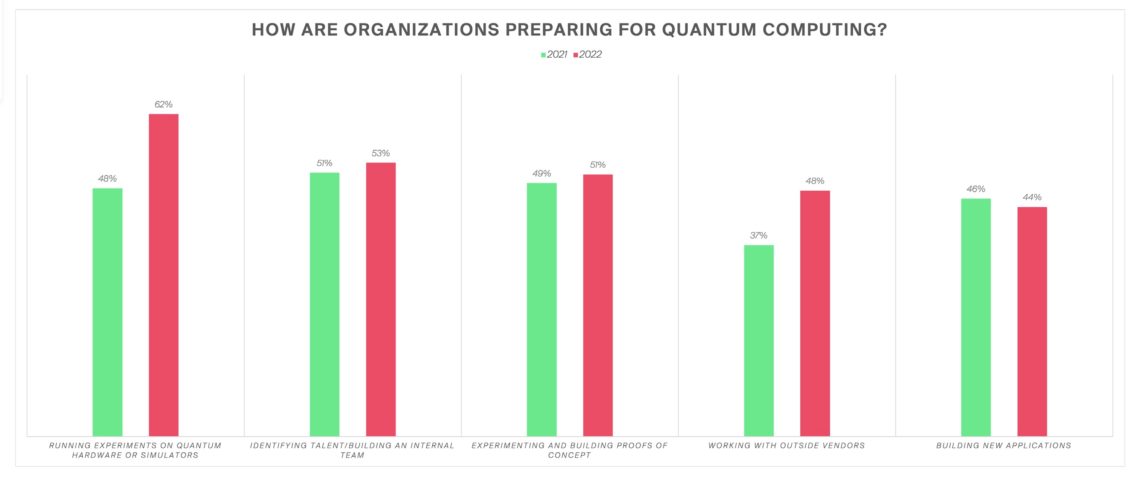
With more quantum hardware and simulator options to choose from than ever, there’s never been a better time to start running experiments. You can buy runtime on most quantum hardware or simulators via the cloud and start benchmarking performance to find out which configuration is best for your application. Orquestra®, Zapata’s application development and deployment platform, has great tools for testing and benchmarking quantum applications across different backends.
Of course, to start building applications and running experiments, you need a quantum team to do it. As I said before, now is the time to start building your team. There is a limited talent pool, and the complexity of the technology makes for a steep learning curve if you decide to upskill existing talent.
Given this complexity, it’s no surprise that we saw a big jump in respondents working with outside vendors (up from 37% in 2021). Furthermore, 43% agreed strongly that a trusted quantum vendor was essential to success, up from 29% in 2021. This sentiment was even stronger among the most advanced adopters, 73% of whom agreed strongly that a quantum vendor was necessary for success.
However, 91% of respondents were concerned about getting locked in with a quantum vendor, up from 72% in 2021. This is a fair concern: it’s still unclear which hardware paradigm will be the best for different applications in the future. Thus it’s no surprise that interoperability was a key vendor consideration among 36% of respondents. At this stage, the safest choice is to pursue hardware agnostic vendors that allow you to experiment with different backends.
We may be biased here, but we recommend Orquestra as one such hardware agnostic platform. Orquestra unifies the best of classical HPC and quantum computing resources from across the ecosystem, including hardware, simulators, and software. Another way to think of it is the operating system for Big Compute. Build your application workflows to run with quantum simulators today and plug-in more advanced quantum devices in the future as the technology matures.
See the full survey report here for more findings. We also invite you to join our webinar on February 9th at 12PM EST.
To dive deeper into the survey findings, year-over-year trends and what your organization can learn from them, contact us.


